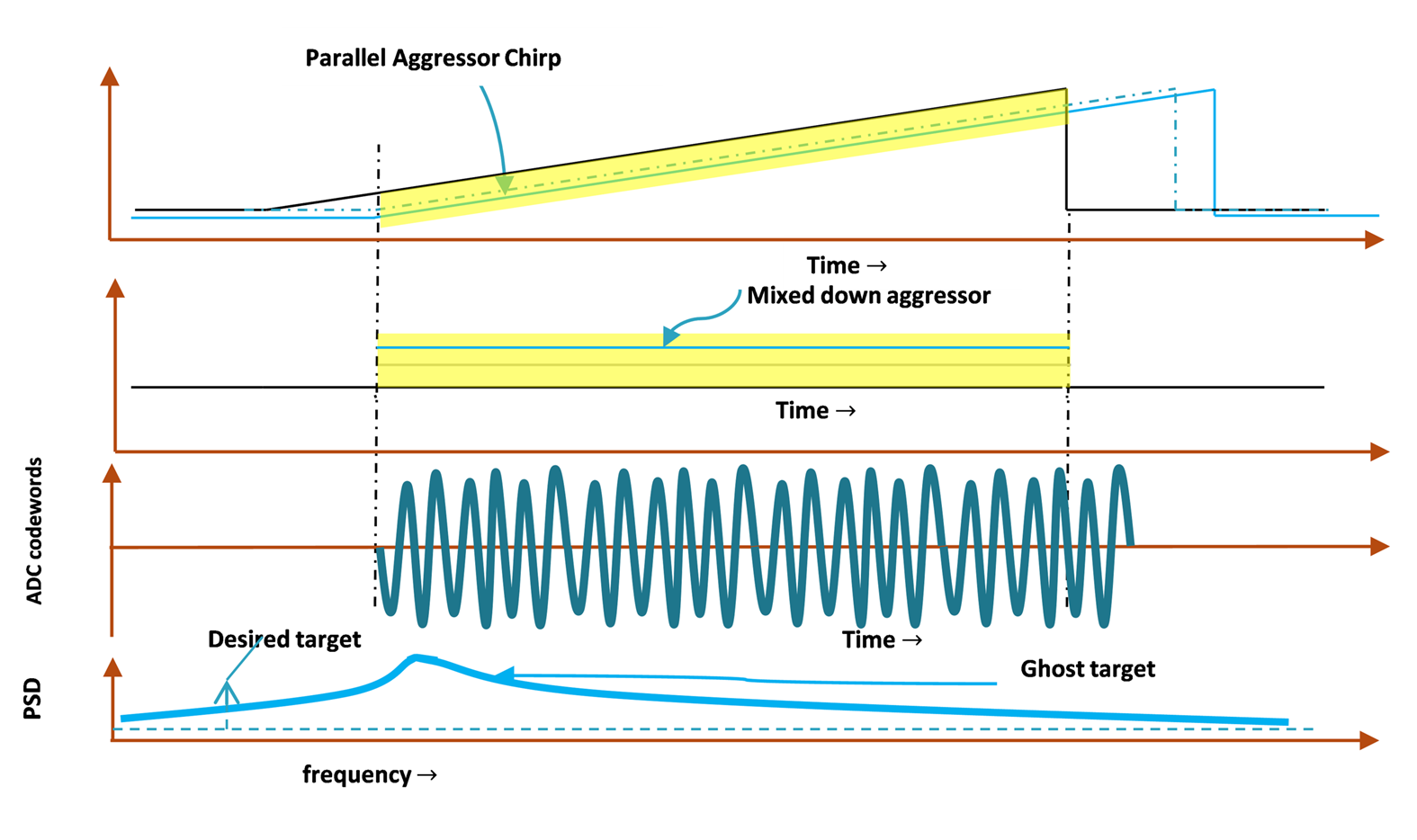SWRA662A January 2020 – September 2022 AWR1243 , AWR1443 , AWR1642 , AWR1843 , AWR1843AOP , AWR2243 , AWR6843 , AWR6843AOP , IWR1443 , IWR1642 , IWR1843 , IWR6443 , IWR6843 , IWR6843AOP
2.3.3 Parallel Interference
When the aggressor chirp and the victim chirp have the exact same slope, interference only occurs when the starting time between the victim chirp and the aggressor chirp is so close that the aggressor chirp is within the IF bandwidth of the victim’s chirp.
 Figure 2-3 Parallel Interferer Causing a Ghost Object
Figure 2-3 Parallel Interferer Causing a Ghost ObjectWhen mixed down with the transmitter chip, the parallel interferer becomes a constant frequency tone in the ADC data. After the Fourier transform has been applied on the ADC data, in the Fourier domain, it becomes a ghost object. That is, it behaves like a target at random distance with a random velocity. This type of interference is called parallel interference. When it happens, the region of interference is almost the entire chirp.
 Figure 2-4 Chirps Occupy a Fraction of the Spectrum-Time Space
Figure 2-4 Chirps Occupy a Fraction of the Spectrum-Time SpaceHowever, the probability of a parallel interferer is very small (see Figure 2-4). Interference only occurs if the two radars start nearly simultaneously, such that the aggressor's radar signal is present in the victim radar's IF bandwidth. Otherwise, the aggressor radar signal is filtered out by the victim's Rx. The probability of interference (pintf) for a parallel interferer can be calculated using the max-delay (td), the chirp repeat periodicity (tc), and the number of radars present in the scene (Nr), as shown in Equation 6.

For example, in ultra-short range radar, with a max distance of 20 meters, the td is 0.13 μs. In this case, interference only occurs if the two radars start within 0.13 μs of each other. Assuming the chirp duration is 100 µs and there are 10 radars operating in the area, the probability of interference is only 1.3% assuming 100% of duty cycle. If the duty cycle of each radar is only 10%, then the probability of interference will be reduced further significantly.
When the victim and aggressor have an independent local oscillator (LO), it is difficult to get them an exact frequency slope even when the user programs them the same slope in the chirp configuration. In that case, the ghost no longer looks like a clean target and the range spectrum and Doppler spectrum all look much noisier, which can be used to identify a parallel interference situation.